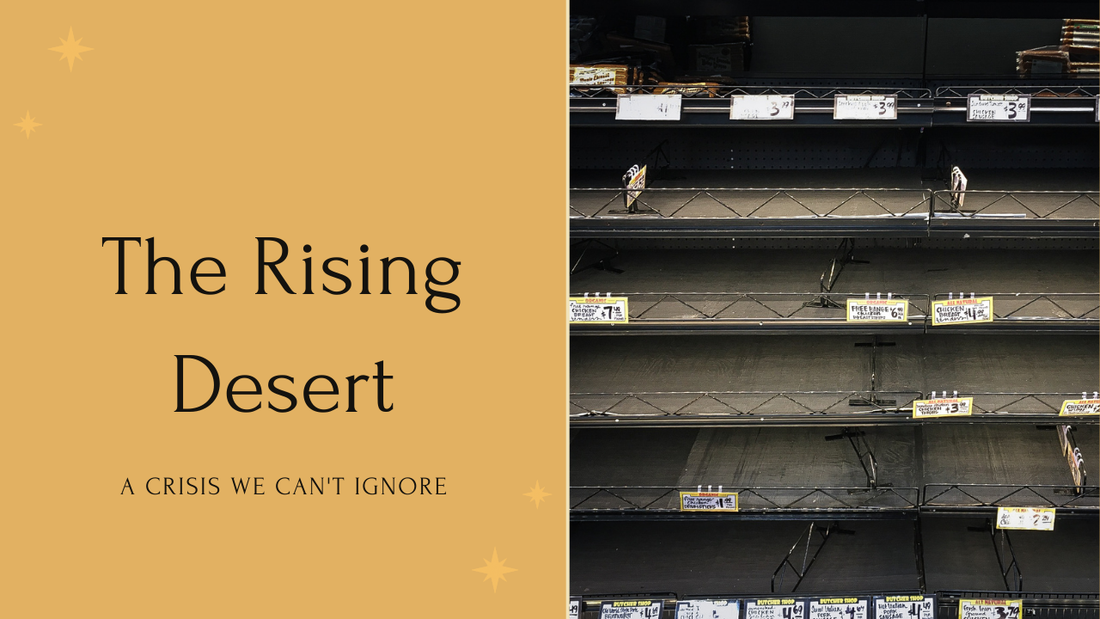Let’s talk about something that has been in the headlines and should be at the forefront of our minds—food deserts and rising food costs. The truth is, access to affordable, healthy food isn’t just a privilege, it’s a human right. But the sad reality is that millions of people, especially in communities of color, are living in food deserts, and with food costs rising unjustly, what was already a serious problem is becoming a full-blown crisis.
If we don’t address these issues head-on, we’re looking at a future where health disparities grow even wider, where people are forced to make impossible choices between putting food on the table and keeping the lights on. So, why should we care, and what can we do? Let’s break it down.
First things first, what is a food desert? It’s not just a trendy term—it’s a reality for millions of Americans. A food desert is an area where access to affordable, healthy food options, especially fresh fruits and vegetables, is limited or non-existent. We’re talking about neighborhoods where the nearest grocery store is miles away, and the only available food options are fast or convenient.
The lack of access to healthy food is directly tied to increased rates of obesity, diabetes, heart disease, and other diet-related health issues. And let’s be real—food deserts disproportionately affect Black, Latino, and Indigenous communities. It’s not just about geography, it’s about inequality, and the systems that keep healthy food out of reach for those who need it the most.
When we talk about food deserts, we’re not just talking about a lack of options—we’re talking about the deep, systemic inequities that keep certain communities in a cycle of poor health and poverty. Tackling food deserts is about breaking that cycle and ensuring everyone has the right to nutritious, life-sustaining food.
As if food deserts weren’t bad enough, we now have the issue of rising food costs. Inflation, supply chain disruptions, and corporate greed are driving prices up, making it harder for everyone—especially those in already vulnerable communities—to afford basic groceries.
When the price of essentials like milk, eggs, and bread starts climbing, the impact on low-income families is immediate and devastating. What used to be a weekly grocery run now becomes an exercise in budgeting survival. And if you’re already living in a food desert, rising prices mean that whatever limited healthy options you did have are now out of reach.
It’s not just the cost of food going up—it’s the cost of staying healthy. When nutritious foods become more expensive, people are forced to rely on cheaper, highly processed options that are calorie-dense but nutrient-poor. That creates a perfect storm for health problems like obesity, diabetes, and heart disease.
Fact: rising food costs and food deserts are making the already wide gap in health outcomes even wider.
Low-income and minority communities are being hit the hardest. Without access to affordable, healthy food, they are forced into a cycle where poor nutrition leads to chronic illness, which leads to higher medical bills, which leads to even deeper poverty. It’s a vicious cycle that can feel impossible to escape. It’s maddening to think about.
And while some people may argue that personal choice plays a role, it’s hard to make healthy choices when the system is stacked against you. If the only food you can afford or access is processed, calorie-dense “food,” what choice do you really have?
This is why attacking food deserts and addressing rising food costs aren’t just public health issues—they’re social justice issues. It’s about leveling the playing field so that everyone, regardless of where they live or how much money they make, has the opportunity to live a healthy life.
So, what can we do about it? The solution isn’t simple, but it starts with recognizing that access to healthy food is a fundamental right. We need to push for policies that invest in food justice, ensuring that communities—especially those hit hardest by food deserts and rising prices—get the resources they need.
Community gardens, farmers’ markets, urban agriculture initiatives, and cooperative grocery stores are just a few ways we can start addressing food deserts from the ground up. These solutions empower communities to take control of their food systems, providing fresh, healthy options right where people live.
On a larger scale, we need government policies that regulate food prices, fight corporate monopolies in the food industry, and invest in sustainable agriculture. We can’t just throw a band-aid on a compound fracture. It’s time to address the root causes of food inequality and make long-term, structural changes.
It’s easy to think of food insecurity as an isolated issue, but it ripples out into every aspect of life. Children who don’t have access to healthy food are more likely to struggle in school. Adults who are dealing with poor health due to bad diets are less likely to be able to work consistently. And the stress of food insecurity takes a toll on mental health, creating even more barriers to success and stability.
By attacking food deserts and stabilizing food costs, we’re not just helping people eat better—we’re investing in the future. Healthy communities are stronger communities. When people have access to the nutrition they need, they are healthier, more productive, and better able to care for themselves and others.
We can’t afford to continue to throw words at this problem…me included. The stakes are too high. This is about more than just food—it’s about health, equity, and justice. It’s about making sure that no one is left behind, no matter where they live or how much money they make.
Addressing these issues requires a commitment from all of us, whether it’s advocating for policy changes, supporting local food initiatives, or simply raising awareness. We all have a role to play in making sure that access to healthy, affordable food is a reality for everyone.
Because at the end of the day, food is more than just fuel. It’s life. It’s health. It’s dignity. And everyone deserves that.

